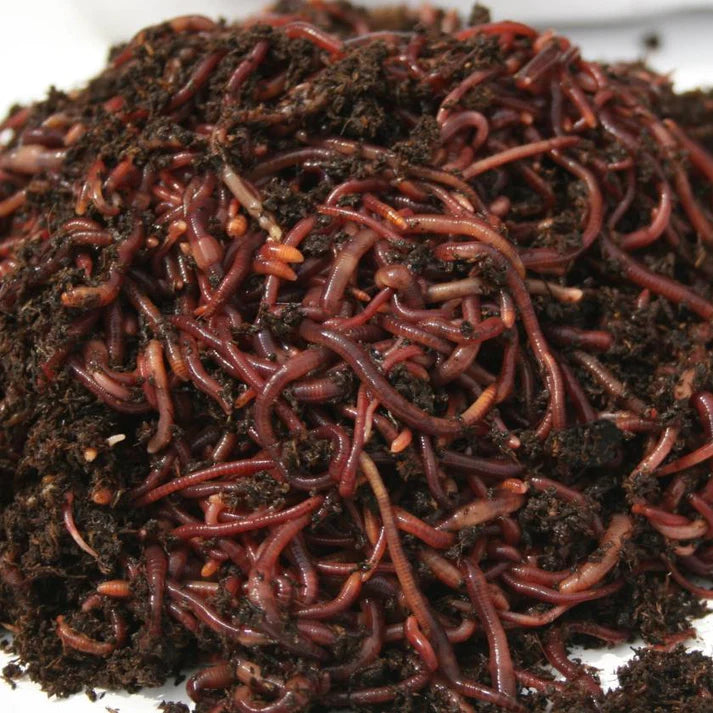Red Wiggler Express - The Facts
Wiki Article
Not known Facts About Red Wiggler Express
Table of ContentsRed Wiggler Express Things To Know Before You BuyThe 20-Second Trick For Red Wiggler ExpressThe Red Wiggler Express StatementsThe Main Principles Of Red Wiggler Express All about Red Wiggler Express
Some worm farmers really hold back food and water to imitate drought conditions and bump up cocoon production. We don't advise this for the home composter as it has the potential to kill off also many of your best worms. Since you understand everything about the red worm it's time to go out and locate a great distributor and get an extra pound or 2 and start your own worm ranch.This guide will certainly present you to the red wiggler to consist of a deeper on dive on the varieties and information on breeding, life cycle, and recreation. We'll discuss just how to maintain red wigglers and why they must be the best worm for the majority of composters. The red wiggler (binomial name: eisenia fetida) is the world's most usual composting worm.
A study suggests that the two can generate hybrid offspring, a phenomenon which ought to or else be considered impossible between the majority of worm species. Fun fact: The "fetid" part of the binomial name describes what some claim is a reeky secretion the red wiggler utilizes to repel killers. Yet I have actually been handling them for several years and never ever observed this! The anatomy of a red wiggler resembles that of various other usual earthworms; a long-segmented body begins at the pointed head and terminates at a slightly-flatted tail.
How Red Wiggler Express can Save You Time, Stress, and Money.
The digestive system system is basic, starting at the mouth where the worm starts to eat its food prior to passing it on to the pharynx. The pharynx is a muscle section which imitates a pump to draw food into the mouth prior to pumping it out into the esophagus. The esophagus is narrow and thin-walled and acts as the "waiting space" for the gizzard.Note: This requirement for grinding is why grit is suggested in a worm bin. The worm includes no indigenous grinding capacity so the worm depends on consumed grit to assist grind its food in the gizzard. The belly is where the initial chemical malfunction of food occurs with the assistance of a protein-busting enzyme.

Within 42 days, these child worms will certainly get to sex-related maturation as shown by the introduction of the clitellum. A fully grown red wiggler can be expected to live between one to three years. The mighty red wiggler may in some cases be used as a bait worm for smaller fish or as a protein source for chickens and reptiles.
Fascination About Red Wiggler Express
And as stated above, they are the most usual composting worm in the globe. Why? Well there's probably not simply one reason. Rather, a mix of expense, strength, and comfort in a large range of temperature levels makes it the most appropriate composting worm for many new vermicomposters. Red wigglers and their cocoons can survive in a large range of conditions.This is a typical practice amongst worm shippers who do not wish to risk having the worms sit in a warm or cold storage facility over the weekend break. Worm growers are not keeping worms in a situation where they are prepared to ship. The worms must be gathered from their environment first, so cultivators will usually establish a Friday or Saturday due date in order to harvest in time for a Monday delivery.
To conserve on shipping cost, you may want to see if there are any close-by "Mother and Pop" shops via a Google search (Where To Buy Worms).
I call these the "Huge 3" factors of worm bin maintenance. If you keep all 3 within proper arrays, then there's not * that * much that can fail with your container. As pointed out previously, red wigglers have a vast temperature level resistance. For best results, keep a temperature of 55F-90F. Brief departures out of that temperature range are fine.
The Best Strategy To Use For Red Wiggler Express

For best results, you intend to strive about 60-70% moisture level. The easiest examination for this is to press a handful as hard as you can. At the excellent moisture levels which is just under 70% that handful must barely generate one decline of fluid. pH in a worm container is quite very easy to keep.


The European Nightcrawler, the bigger cousin of the red wiggler, is just as ravenous and additionally creates a great bait worm. It prefers a little bit of a cooler environment than the red wiggler. The African Nightcrawler is a huge composting worm and makes a gorgeous, granular cast.
The Indian Blue is ravenous, yet additionally chooses a warmer climate and it also exhibits a propensity to get away the bin. The red wiggler is a durable worm and isn't as choosy about its environment. I like to call it the Ford Taurus of vermicomposting worms; you will not brag to your hardcore composting pals that you have them, yet they will certainly serve you well.
Getting The Red Wiggler Express To Work
Guaranteed to life 1/2 pound of hand sorted Red Wigglers/Compost with worms (+500 worms) in different phases of life from cocoons to mature worms in their all-natural environment/bedding. Hand arranged worms lowered the disturbance of the worms therefore guaranteeing live shipment. Red wiggler worms do not like resonances or light.Report this wiki page